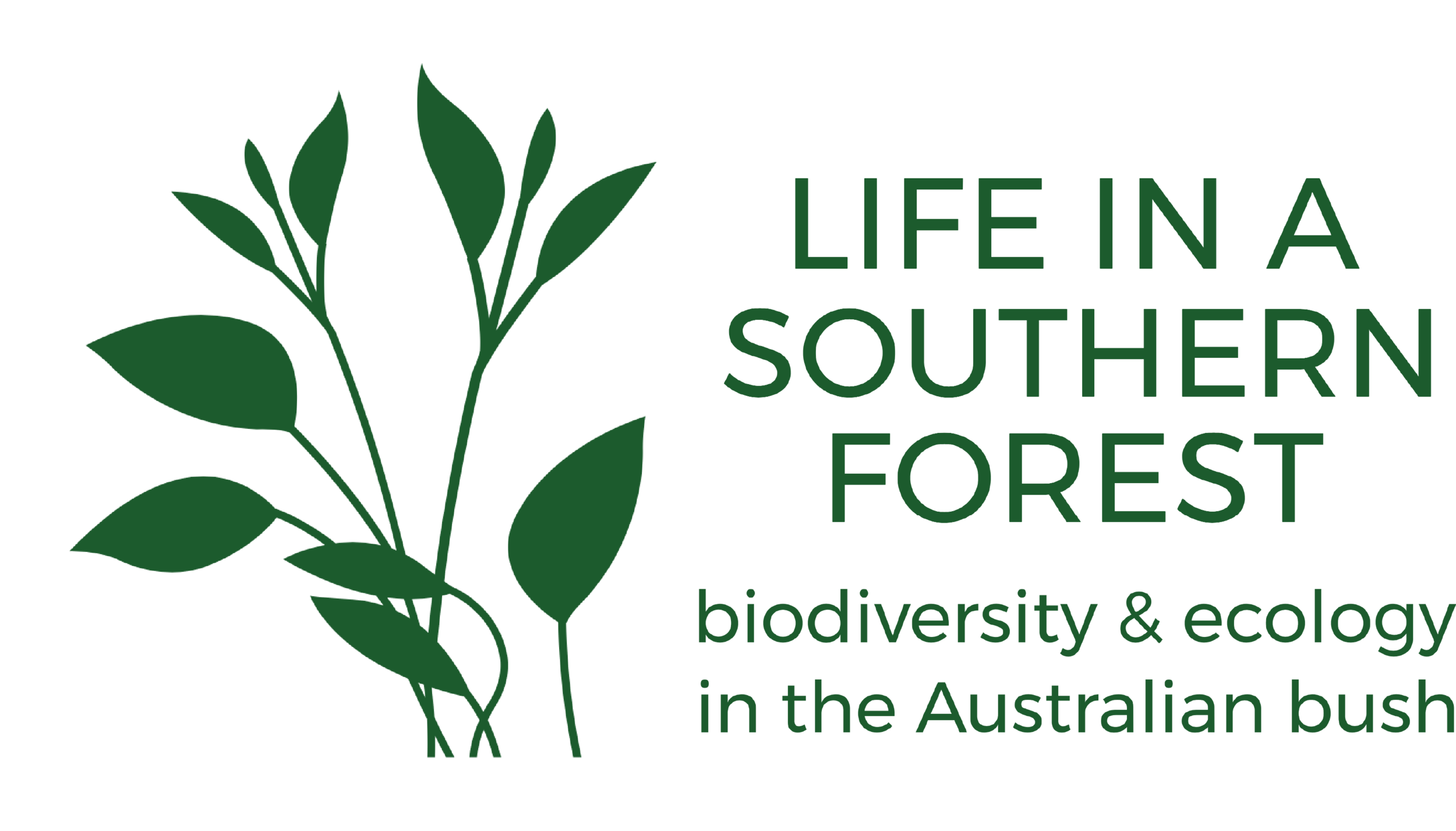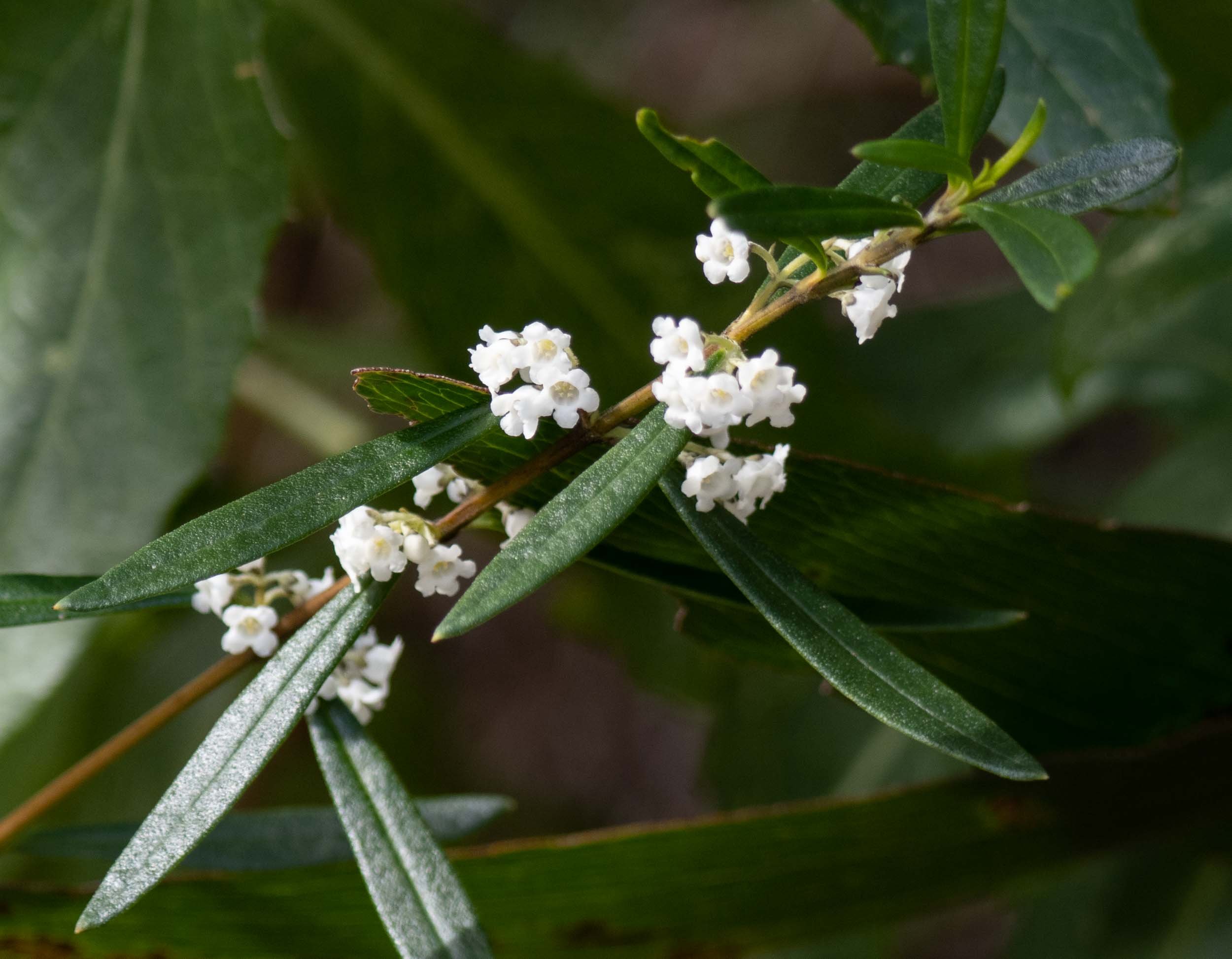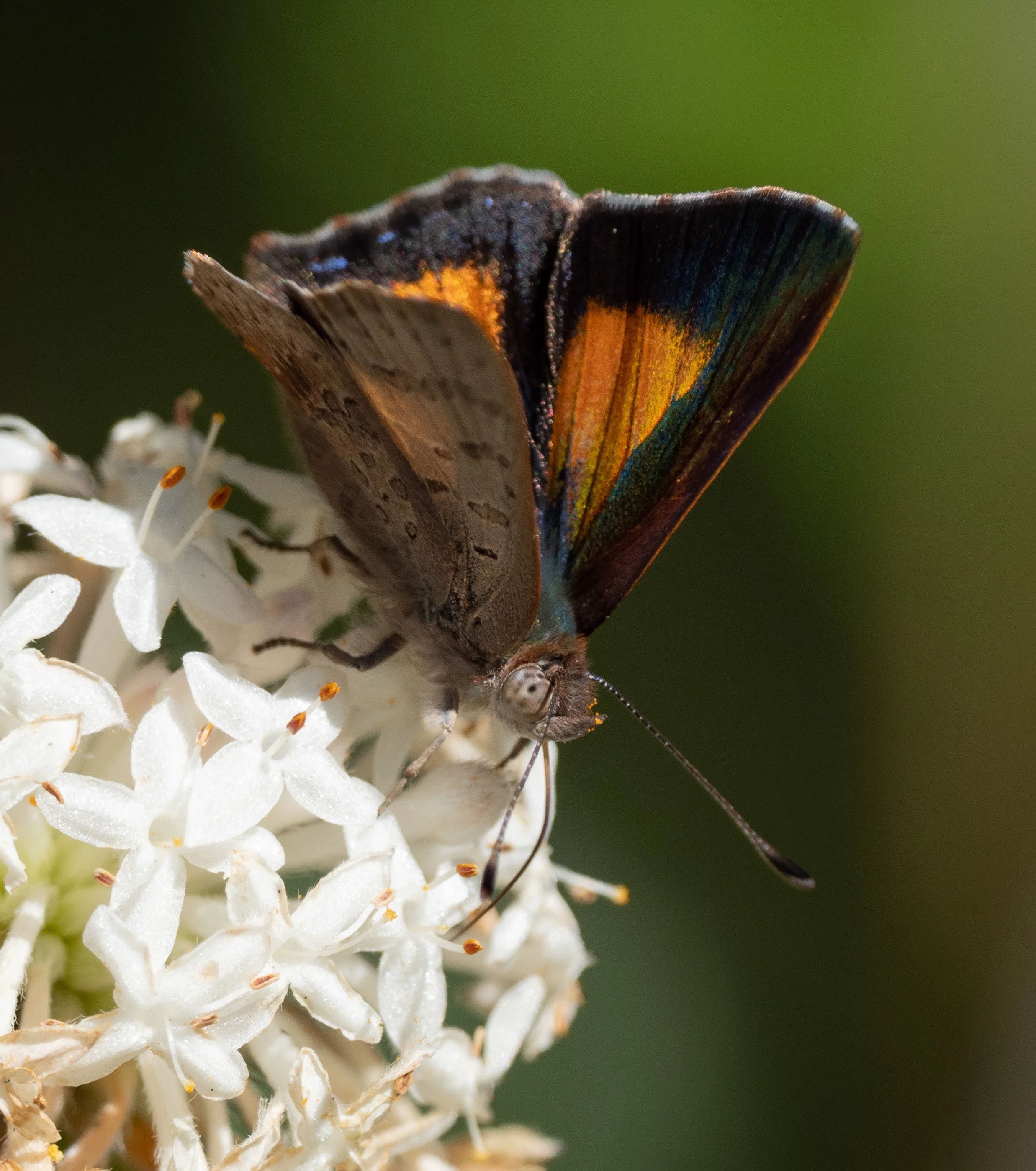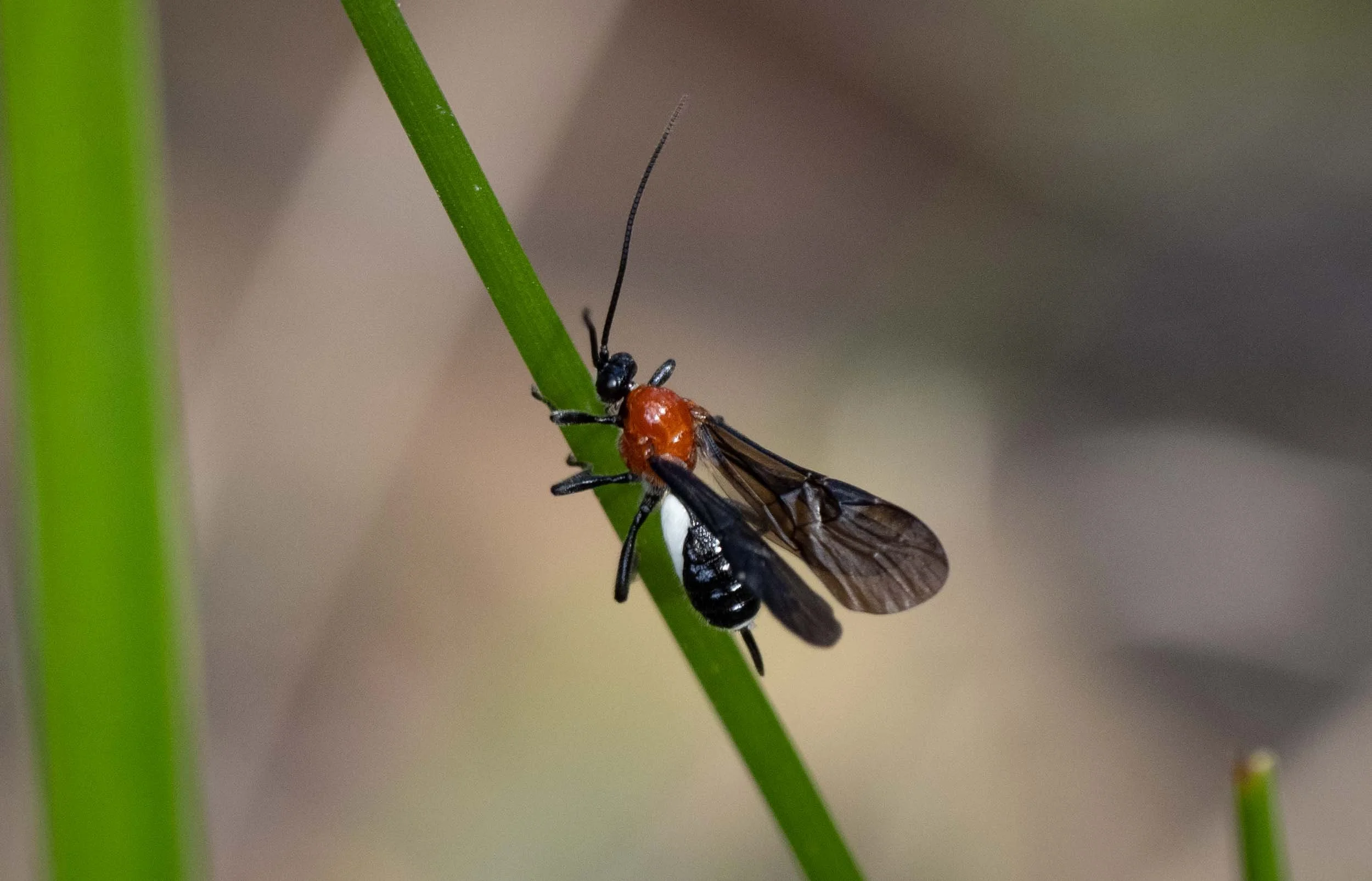A rush into spring
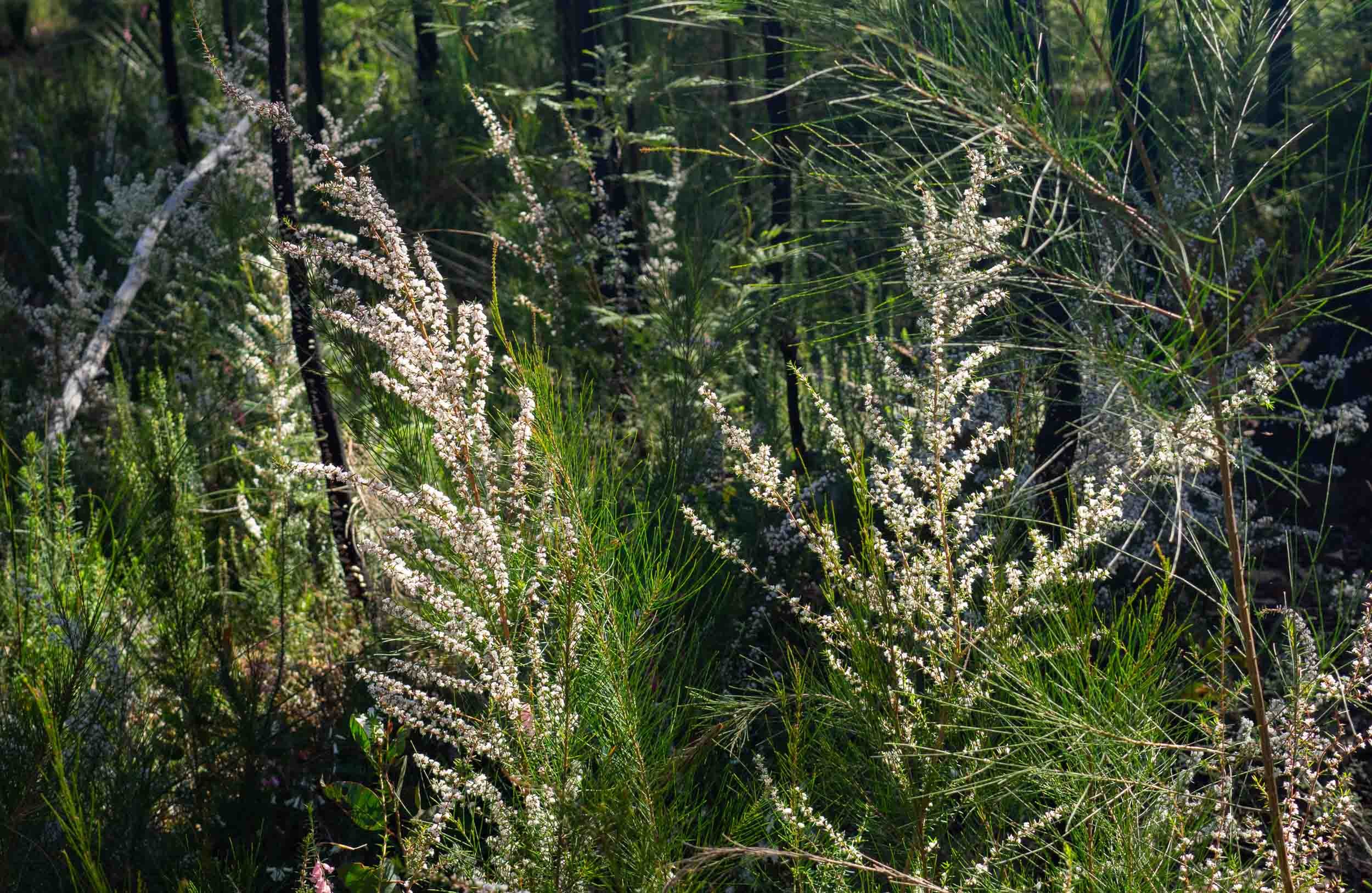
A fortnight ago the forest was just beginning to stir. The first signs of spring flowering were evident but it was a relatively modest display.
This has now suddenly changed. A score or more of different types of plants is now in full bloom, filling the forest with colour. And the insects are back!
The flowers
Having recorded flowering times of individual species across the years, it is clear that there is a stereotypic flowering sequence. For example, Pink Beard-heath (Styphelia ericoides) always blooms before its close relative Lance Beard-heath (Leucopogon affinis). Each plant probably responds to a particular combination of day length and temperature.
Certain species have flowered much more strongly this year than previously. The reasons for this are likely many and varied.
Lance Beard-heath bushes resprouted from burnt stumps after the January 2020 fire. They have now regrown to a mature size and show the same level of flowering typically seen before the fire.
Other bushes, such as Pink Beard-heath and Lesser Guinea Flower (Hibbertia calycina), regrew from seed after the fire. There are now many more individual plants of these species than before the fire – they are typical ‘fire-responders’ – and all of these plants have flowered strongly.
Caladenia catenata (White Fingers) - our second orchid for the season appeared a week ago.
The white flowers of Rhytidosporum procumbens (White Marianth), a low growing herb, have appeared in many spots in the forest over the past week.
Drosera auriculata (Tall Sundew) is beginning to flower. A rapidly growing population of small insects provides nutrition for these carnivorous plants.
By far the most dominant plant in the forest undergrowth is Pimelea linifolia linifolia. Its common name Queen of the Bush is very appropriate! This species began flowering in early autumn and is still going strong.
Tetratheca pilosa latifolia (Pink-Bells) is found in open areas of the forest and has just begun to bloom.
A new plant for our home list! We first sighted Logania albiflora (Narrow-leaf Logania) just a few days ago, growing in a rocky area just above the banks of the river. While widespread, it is apparently uncommon.
Hibbertia calycina (Lesser Guinea Flower), one of several Hibbertia species found in our forest, is clearly a fire responder. We have seen many more plants this year than before the Jan 2020 Border Fire. It began flowering 3 weeks ago.
Hibbertia aspera aspera (Rough Guinea Flower) is a widespread low shrub in the forest.
Hibbertia dentata (Twining Guinea Flower) grows as a vine along the forest floor or up the stems of other plants. It began flowering about 3 weeks ago.
Stypandra glauca (Nodding Blue Lily) grows profusely on the banks of the river and has been flowering for at least a week. It is another fire responder, as just a few plants were present before the Jan 2020 fire.
Stackhousia monogyna (Creamy Candles) is a widespread forb in open areas of the forest. Its flowers have just begun to open.
Some of the flowers of Coronidium elatum (Tall Everlasting) plants have now opened fully.
The insects and spiders
In parallel with this burst of flowering activity, we’ve seen a dramatic increase in the number of insects in the forest.
Two weeks ago, the only insects to be seen were honey bees and small clouds of hovering midges. Now, a host of native bees and flies crowd around the early spring flowers, searching for a feed of nectar. The bee maven (aka Kerri) has given a detailed account of the interplay between these insects and the flowers.
The following photo gallery illustrates some of the other insects (and two spiders) we’ve seen in the forest in recent days. Flies and wasps are particularly well represented.
Flower Wasps (subfamily Thynninae) definitely do take nectar from flowers - or at least the male does. A male is seen here carrying a flightless female. Confused? Kerri has given the FULL story about these wasps in a blog post. Click HERE to read it.
Stuff is happening down at ground level as well. This insect Paratettix argillaceus belongs to the family Tetrigidae. While it looks like a grasshopper, it is only distantly related to them. I’ve seen only one species in our forest but it comes in a range of colours and patterns. Click HERE to see them.
